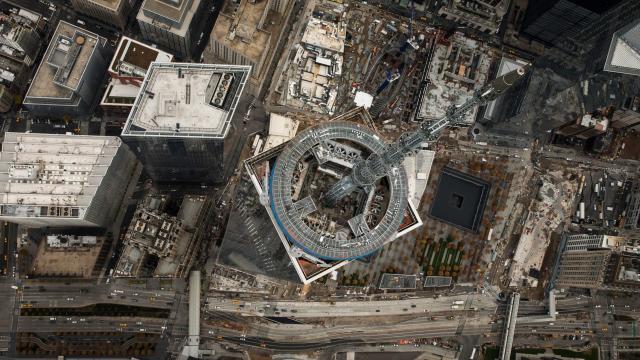On stormy days and windy nights, Tribeca residents say their neighbourhood is filled with a strange, high-pitched whistling sound coming from the redeveloped World Trade Center site. It’s an inopportune location for howling (although, really, where is?), but it’s hardly the first building to surprise its neighbours by humming or whistling.
Picture: Getty Images/Andrew Burton
In fact, a 2006 New Scientist article on the topic quotes one engineer describing building-related noise as “a construction industry cover-up“, just another example of bad planning on the part of the designers. These whirrs, whistles, and hums seem like the aural counterpart to the intense heat given off by a handful of reflective buildings — an example of how aesthetics tend to trump functionality in real estate.
As an example, New Scientist‘s Mick Hamer brings up Beethem Tower, Manchester’s tallest building and by far the loudest:
The building’s eerie humming was reported shortly after the building opened in 2006 — according to witnesses, the vibrations tend to strike a rough “middle C on the piano.” Engineers say sound is caused by the vibration of wind around the thin blade of louvres that extend above the top floor:
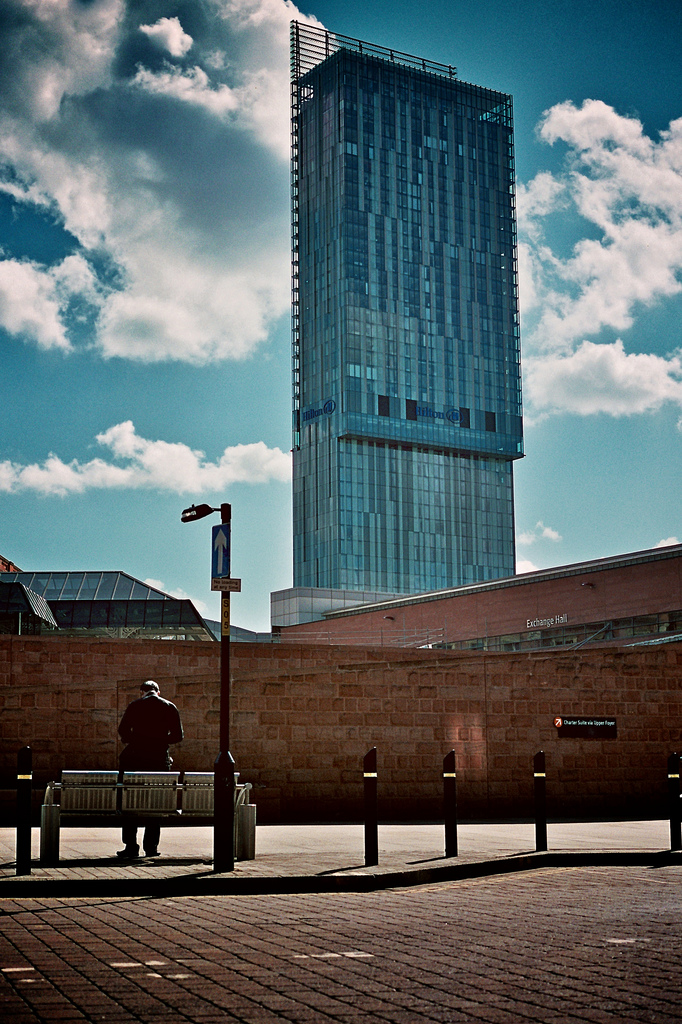
Picture: Nathan Makan
Engineers have tried at least three approaches to dampening the sound — from inserting foam between the louvres to installing aluminium rods that would theoretically change the flow of wind around the blade. But after seven years, the sound is still audible during storms. Last year, the architect of the building, Ian Simpson, apologised for the “distress” the noise is causing — which he knows firsthand, since he lives in the building’s penthouse.
The engineers working on silencing Beetham likely looked at another famously noisy tower: Midtown Manhattan’s Cityspire Tower, a concrete behemoth that was once one of the tallest in the world:
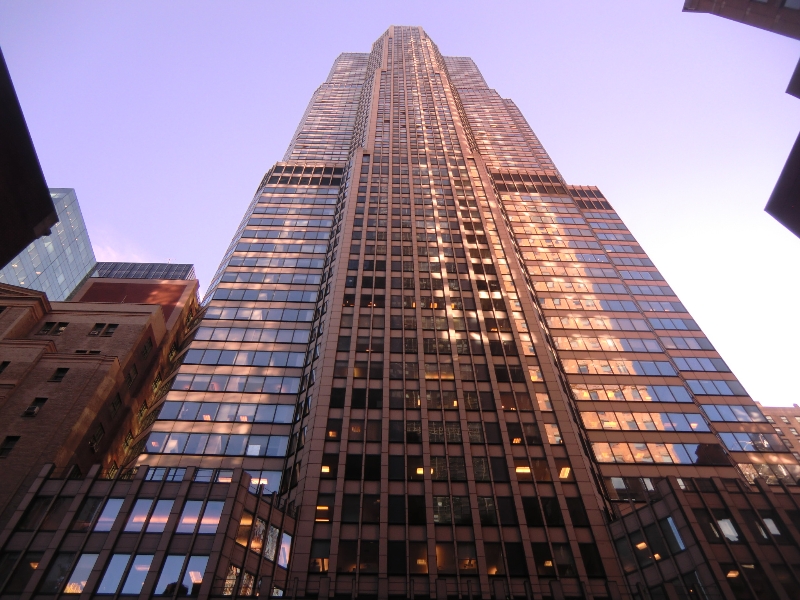
When the building opened in 1990, the passage of air around a series of louvres on its cooling tower created what residents described to The New York Times as a “an insistent high whine.” The solution, in this case, was simple: Remove every other louvre, which changed the speed of the wind passing over the rods.
That’s the basic gist of almost every instance of architectural howling: When wind passes over an aperture — like a bottle — it creates an oscillating vortex that creates pressure inside the aperture. If the speed of the wind matches the frequency of the air inside, it makes a noise. This is called a Helmholtz Resonator, a common explanation for noisy architecture. But there are other aural phenomena, too. Aeolian tones for example, which occur when wind passes over a sharp edge, like a louvre or wire.
“These resonances create the architectural equivalent of a musical instrument, such as a flute or an Aeolian harp,” explains ISVR, a consulting group that deals with noise and vibration, “which generate a tone at particular wind speeds and directions.”
In some cases, the geometry of a structure is just too complex to figure out exactly what is causing the noise. Such was the case during the demolition of the infamous Cabrini-Green projects in Chicago, which reportedly hummed and whistles for weeks during the razing process.
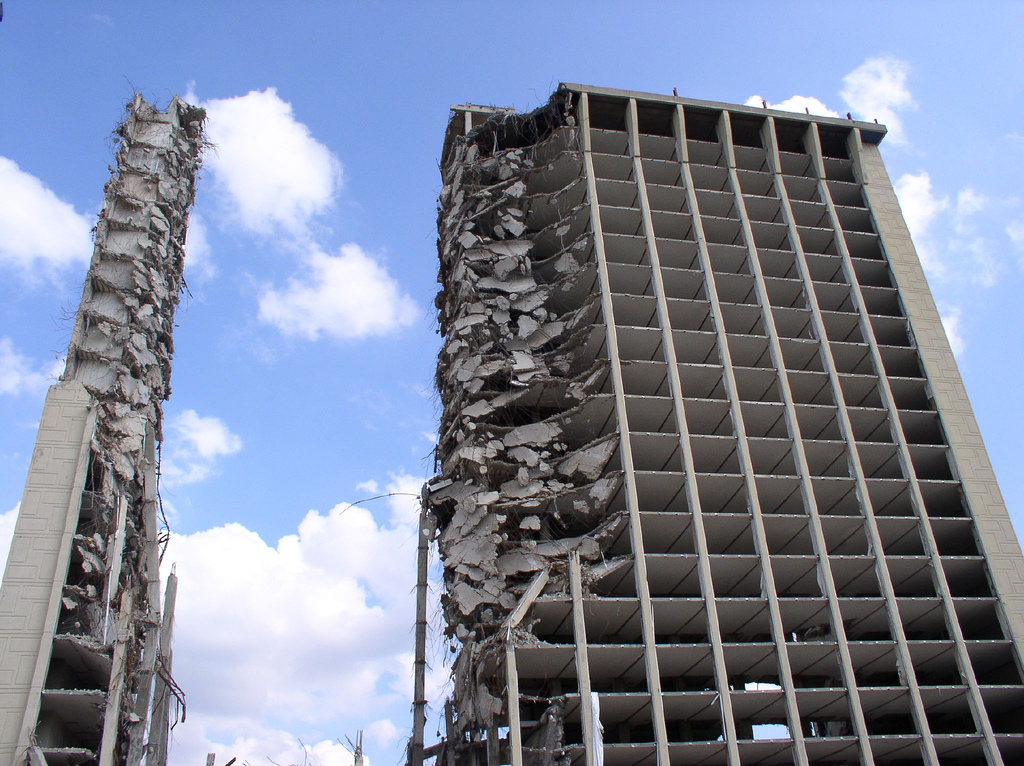
Image: Andrew Evans
In other cases, artists and architects have exploited the aural phenomenon intentionally. This 2007 installation in rural England, designed by Tonkin Liu Architects, uses hundreds of metal pipes to create a wind-powered symphony:
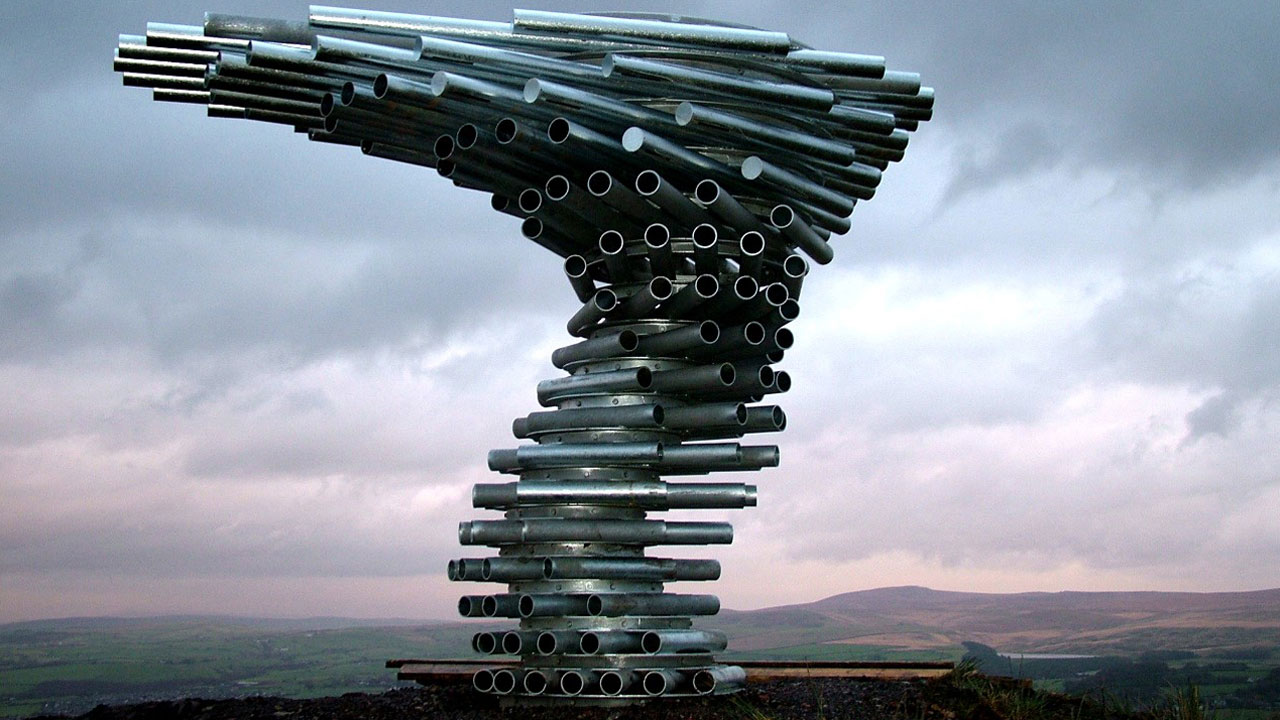
Image via.
Lovely, sure — but also in the middle of the countryside. Tenants near the WTC are, understandably, none too pleased that they’re being woken up in the middle of the night by an unearthly howling.
So what’s to be done? The architects haven’t commented on the cause yet, but a rep from the Port Authority told the local news channel Pix 11 that the source could be one of the large shafts that are still open within the under-construction tower — in which case, the noise will eventually cease. If the noise is coming from louvres or the building’s spire, however, it will mean identifying and retrofitting the building — no small feat, considering the scale and cost of the WTC.
But just to be clear? It’s not haunted. Port Authority’s rep told Pix 11 he hopes ghost stories won’t “become part of the dialogue.” Now is the perfect chance to propose your own tall tale explanation. I nominate “Bloomberg, lamenting the end of his reign.”
